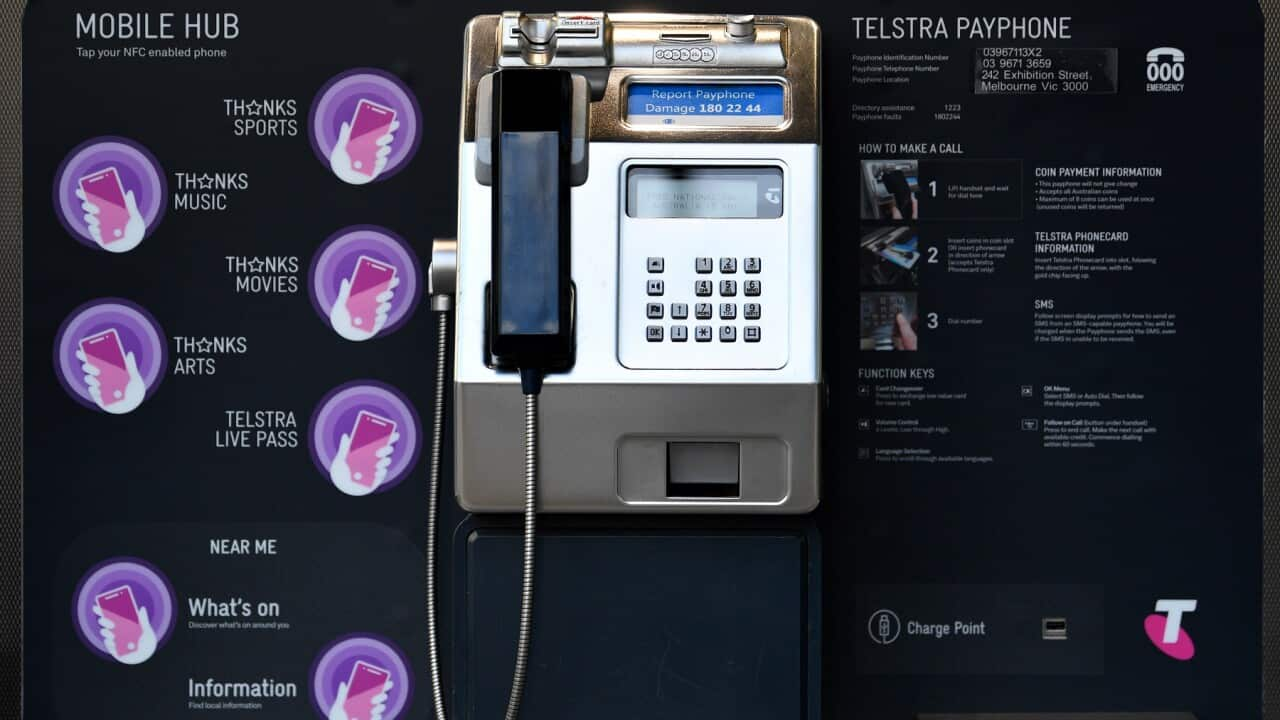TRANSCRIPT
Telstra has announced a new initiative that will see one thousand of its payphones upgraded in disaster prone areas to offer free Wi-Fi, charging points and backup power.
The initiative will also see the company begin simulating disaster roaming coverage on its own network, with the hopes of eventually ensuring that anyone in an affected area is able to keep updated and contact family members.
As Australia heads into what's already proving a challenging bushfire season, these measures may offer some security to those in areas lacking adequate mobile infrastructure.
Telstra's Steve Tinkler says the changes will be trialled soon.
"So, a mobile device, if a mobile device is in an emergency area, you can't connect to your normal network because it's disabled or it's had impact due to the disaster or in fact there may not be coverage from that network in that location. Your phone will be able to roam onto an operating network in that area, so, and it will be specific to those emergency locations, so disasters, you know, anywhere across Australia at any particular point in time and that's part of what we're going to test with the simulation and how do we do that and how do we bring those online in those particular areas when called upon by a particular disaster."
Bushfire survivor and member of the group Bushfire Survivors for Climate Change, Jan Harris lost her home in 2018 after a bushfire burnt through the town of Tathra near the Bega Valley in New South Wales.
Harris says there was no warning on the day and the phone towers were all down.
She says clearer communications are needed between emergency services and local radio stations, but that she can't imagine anyone looking for a payphone during a bushfire.
"So, we evacuated to Tathra, we went with the fire. So, we headed into danger so and spent several hours there until the police came and megaphones are saying to people 'get out, get out" you know "you've got to move, get into Bega." So, there was just this, you know, no communication about what was going on and I certainly wouldn't have been looking for a free payphone. You know, so, it just it's an odd thing to me that, and I don't know maybe a fire shed or something but that, that's not where people head."
Some Australians say they've never used a payphone and would struggle to remember the phone number of friends and family.
While some people in Melbourne say they've been saved by payphones in the past.
"I was just lucky because I'd locked myself out of my house, didn't have my phone with me and I remember my son told me that down the road the payphones you can use them. And I remembered my ex-wife's number, the only persons number that I know... and I rang her. Because I don't know their numbers, but it was handy I tell you what, that one off."
Others are unsure that it's where they'd head in an emergency.
"It wouldn't be on the top of my priorities I'd say that. But I mean if I had no other form of communication then I'd go for it but no it would not be on the top of my priority list... not at all."
But Steve Tinker says these payphones could be critical to those in need, especially in rural communities.
"So, what we find is a lot of times, particularly during disasters is that payphones can be vital because if the mobile network is not working and the NBN may not be working and other technologies. The payphone could be working and it sometimes could be the last resort to let people know you're okay or contact emergency services. So, they're an important part of the communications mix for regional areas and it's important people know where they are in their local areas as part of their disaster plan."
In 2022, the Australian Competition and Consumer Commission commenced an inquiry into regional mobile infrastructure.
The report, which was finalised in October, partly focused on the feasibility of offering temporary mobile coverage to areas affected by disasters.
Among concerns, the report raises the point that the regional advantage Telstra holds over competition, may have the effect of disincentivising other telecommunications companies from investing in regional coverage.
If trials are successful, Telstra's proposed disaster roaming coverage will expand to customers outside of their customer base.













